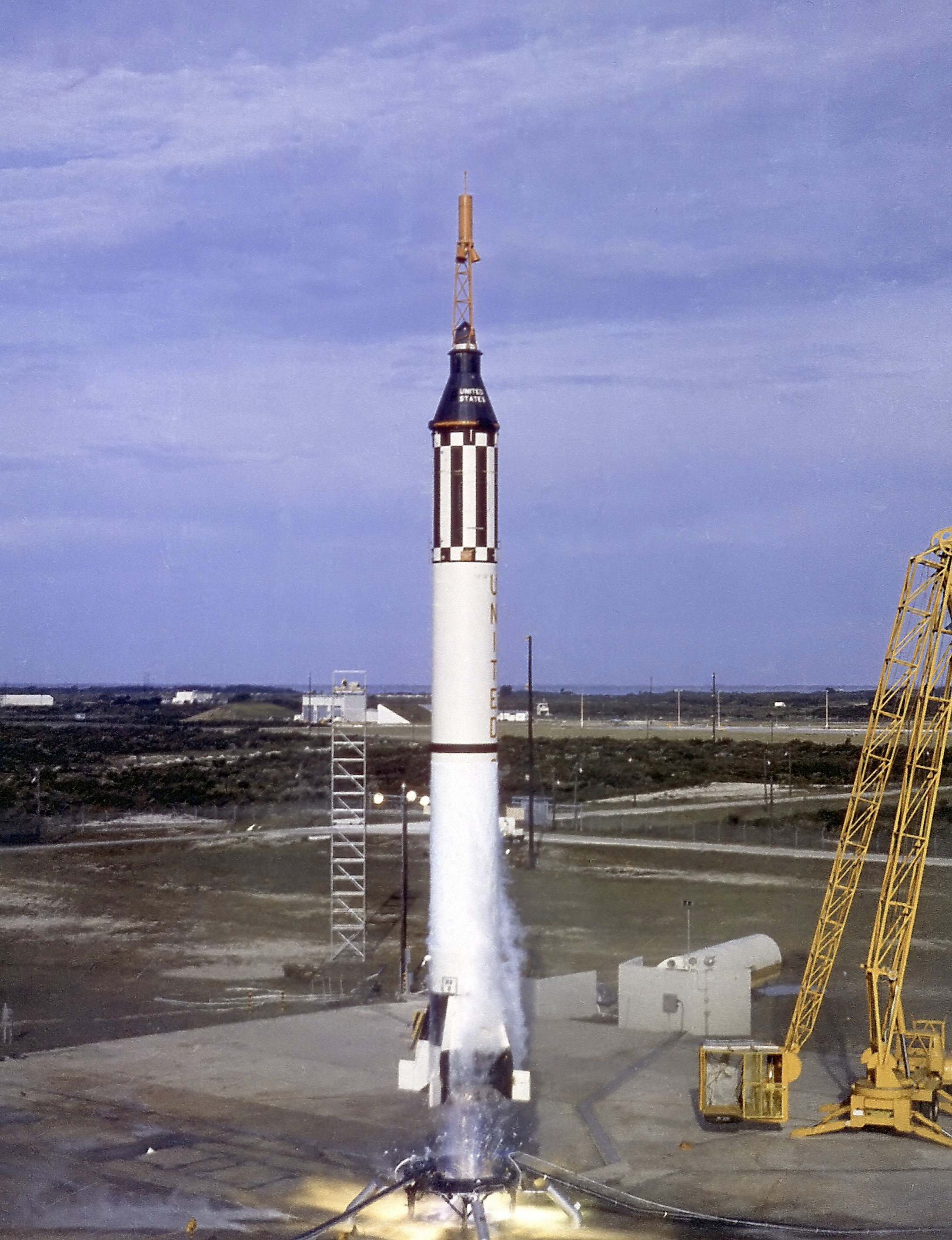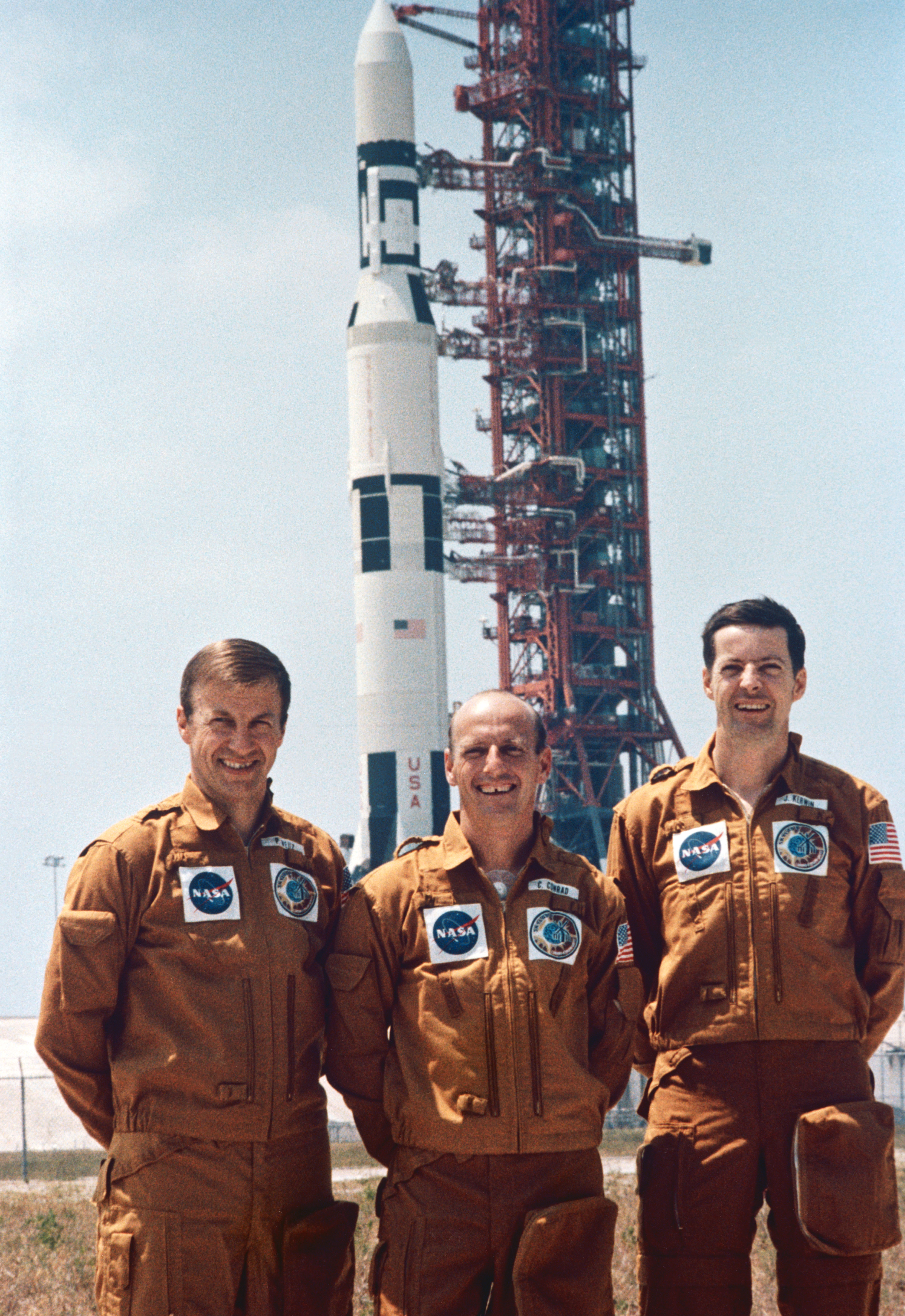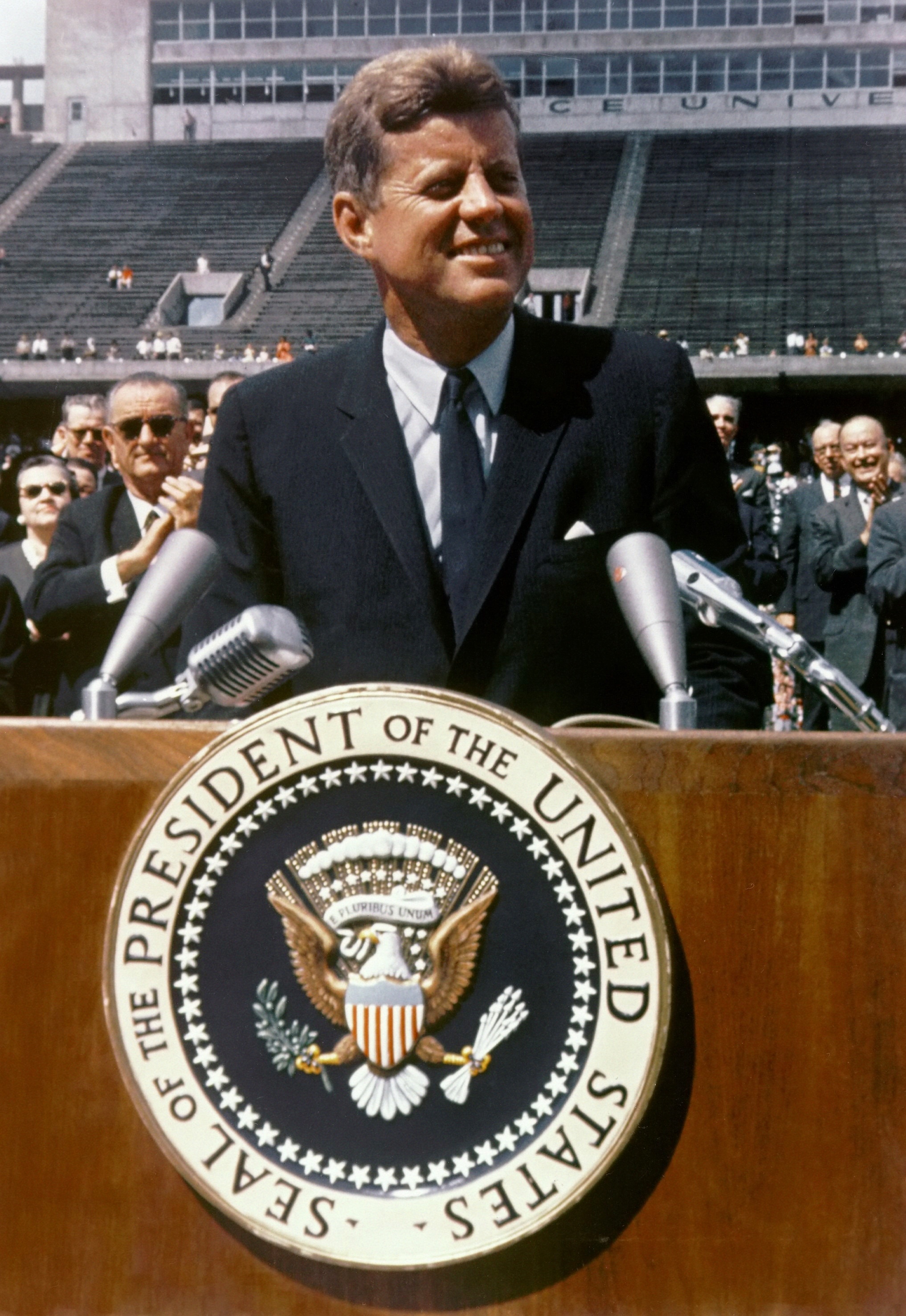|
Congressional Space Medal Of Honor
The Congressional Space Medal of Honor was authorized by the United States Congress in 1969 to recognize "any astronaut who in the performance of his or her duties has distinguished himself or herself by exceptionally meritorious efforts and contributions to the welfare of the Nation and mankind". It is awarded by the President of the United States in Congress's name on recommendations from the Administrator of the National Aeronautics and Space Administration. The award is a separate decoration from the Medal of Honor, which is a military award for extreme bravery and gallantry in combat. Although the Congressional Space Medal of Honor is a civilian award of the United States government, it is authorized as a non-military decoration for display on U.S. military uniforms because it is awarded by a federal agency. In such cases, the Congressional Space Medal of Honor is worn as a ribbon "immediately preceding the Prisoner of War Medal.". DoD policy specifically prohibits wear of ... [...More Info...] [...Related Items...] OR: [Wikipedia] [Google] [Baidu] |
United States Congress
The United States Congress is the legislature of the federal government of the United States. It is bicameral, composed of a lower body, the House of Representatives, and an upper body, the Senate. It meets in the U.S. Capitol in Washington, D.C. Senators and representatives are chosen through direct election, though vacancies in the Senate may be filled by a governor's appointment. Congress has 535 voting members: 100 senators and 435 representatives. The U.S. vice president The vice president of the United States (VPOTUS) is the second-highest officer in the executive branch of the U.S. federal government, after the president of the United States, and ranks first in the presidential line of succession. The vice pr ... has a vote in the Senate only when senators are evenly divided. The House of Representatives has six non-voting members. The sitting of a Congress is for a two-year term, at present, beginning every other January. Elections are held every even-n ... [...More Info...] [...Related Items...] OR: [Wikipedia] [Google] [Baidu] |
Space Shuttle Columbia Disaster
The Space Shuttle ''Columbia'' disaster was a fatal accident in the list of space programs of the United States, United States space program that occurred on February 1, 2003. During the STS-107 mission, Space Shuttle Space Shuttle Columbia, ''Columbia'' disintegrated as it Atmospheric entry, reentered the atmosphere over Texas, killing all seven astronauts on board. The mission was the second that ended in disaster in the Space Shuttle program after Space Shuttle Challenger disaster, the loss of ''Challenger'' and all seven crew members during ascent in 1986. During the STS-107 launch, a piece of the insulative foam broke off from the Space Shuttle external tank and struck the Space Shuttle thermal protection system, thermal protection system tiles on the Space Shuttle orbiter, orbiter's left wing. Similar foam shedding had occurred during previous Space Shuttle launches, causing damage that ranged from minor to near-catastrophic, but some engineers suspected that the damage ... [...More Info...] [...Related Items...] OR: [Wikipedia] [Google] [Baidu] |
Gemini 3
Gemini 3 was the first crewed mission in NASA's Project Gemini and was the first time two American astronauts flew together into space. On March 23, 1965, astronauts Gus Grissom and John Young flew three low Earth orbits in their spacecraft, which they nicknamed ''Molly Brown''. It was the first U.S. mission in which the crew fired thrusters to change the size and shape of their orbit, a key test of spacecraft maneuverability vital for planned flights to the Moon. It was also the final crewed flight controlled from Cape Kennedy Air Force Station in Florida, before mission control functions were moved to a new control center at the newly opened Manned Spacecraft Center in Houston, Texas. Crew Backup crew (This was the prime crew on Gemini 6) Original crew The crew of Gemini 3 was changed after Shepard was grounded with an inner ear disorder in late 1963. Support crew * Roger B. Chaffee (Houston CAPCOM) * L. Gordon Cooper Jr. (Cape CAPCOM) Mission parameters * Mass: * ... [...More Info...] [...Related Items...] OR: [Wikipedia] [Google] [Baidu] |
Mercury-Redstone 4
Mercury-Redstone 4 was the second United States human spaceflight, on July 21, 1961. The suborbital Project Mercury flight was launched with a Mercury-Redstone Launch Vehicle, MRLV-8. The spacecraft, Mercury capsule #11, was nicknamed the ''Liberty Bell 7''. It was piloted by astronaut Virgil "Gus" Grissom. The spaceflight lasted 15 minutes 30 seconds, reached an altitude of more than , and flew downrange, landing in the Atlantic Ocean. The flight went as expected until just after splashdown, when the hatch cover, designed to release explosively in the event of an emergency, accidentally blew. Grissom was at risk of drowning, but was recovered safely via a U.S. Navy helicopter. The spacecraft sank into the Atlantic and was not recovered until 1999. Mission parameters * Mass: 1 286 kg * Maximum altitude: 190.39 km * Range: 486.15 km * Launch vehicle: Redstone rocket Spacecraft The MR-4 spacecraft, Mercury capsule #11, was designated to fly the second c ... [...More Info...] [...Related Items...] OR: [Wikipedia] [Google] [Baidu] |
Virgil I
Publius Vergilius Maro (; traditional dates 15 October 7021 September 19 BC), usually called Virgil or Vergil ( ) in English, was an ancient Roman poet of the Augustan period. He composed three of the most famous poems in Latin literature: the ''Eclogues'' (or ''Bucolics''), the ''Georgics'', and the epic ''Aeneid''. A number of minor poems, collected in the ''Appendix Vergiliana'', were attributed to him in ancient times, but modern scholars consider his authorship of these poems as dubious. Virgil's work has had wide and deep influence on Western literature, most notably Dante's ''Divine Comedy'', in which Virgil appears as the author's guide through Hell and Purgatory. Virgil has been traditionally ranked as one of Rome's greatest poets. His ''Aeneid'' is also considered a national epic of ancient Rome, a title held since composition. Life and works Birth and biographical tradition Virgil's biographical tradition is thought to depend on a lost biography by the Roman poet ... [...More Info...] [...Related Items...] OR: [Wikipedia] [Google] [Baidu] |
Mercury-Atlas 6
Mercury-Atlas 6 (MA-6) was the first crewed American orbital spaceflight, which took place on February 20, 1962. Piloted by astronaut John Glenn and operated by NASA as part of Project Mercury, it was the fifth human spaceflight, preceded by Soviet orbital flights Vostok 1 and 2 and American sub-orbital flights Mercury-Redstone 3 and 4. The Mercury spacecraft, named ''Friendship 7'', was carried to orbit by an Atlas LV-3B launch vehicle lifting off from Launch Complex 14 at Cape Canaveral, Florida. After three orbits, the spacecraft re-entered the Earth's atmosphere, splashed down in the North Atlantic Ocean, and was safely taken aboard . Total mission flight time was four hours 55 minutes and 23 seconds. The event was named an IEEE Milestone in 2011. Preparation After the successful completion of the Mercury-Atlas 5 flight that carried Enos, a chimpanzee, in late November 1961, a press conference was held in early December. Reporters asked NASA's Robert Gilruth ... [...More Info...] [...Related Items...] OR: [Wikipedia] [Google] [Baidu] |
John Glenn Low Res
John is a common English name and surname: * John (given name) * John (surname) John may also refer to: New Testament Works * Gospel of John, a title often shortened to John * First Epistle of John, often shortened to 1 John * Second Epistle of John, often shortened to 2 John * Third Epistle of John, often shortened to 3 John People * John the Baptist (died c. AD 30), regarded as a prophet and the forerunner of Jesus Christ * John the Apostle (lived c. AD 30), one of the twelve apostles of Jesus * John the Evangelist, assigned author of the Fourth Gospel, once identified with the Apostle * John of Patmos, also known as John the Divine or John the Revelator, the author of the Book of Revelation, once identified with the Apostle * John the Presbyter, a figure either identified with or distinguished from the Apostle, the Evangelist and John of Patmos Other people with the given name Religious figures * John, father of Andrew the Apostle and Saint Peter * Pope ... [...More Info...] [...Related Items...] OR: [Wikipedia] [Google] [Baidu] |
Skylab 2
Skylab 2 (also SL-2 and SLM-1) was the first crewed mission to Skylab, the first American orbital space station. The mission was launched on an Apollo command and service module by a Saturn IB rocket on May 25, 1973, and carried NASA astronauts Pete Conrad, Joseph P. Kerwin, Paul J. Weitz to the station. The name Skylab 2 also refers to the vehicle used for that mission. The Skylab 2 mission established a twenty-eight-day record for human spaceflight duration. Furthermore, its crew were the first space station occupants ever to return safely to Earth – the only previous space station occupants, the crew of the 1971 Soyuz 11 mission that had crewed the Salyut 1 station for twenty-four days, died upon reentry due to unexpected cabin depressurization. The crewed Skylab missions were officially designated Skylab 2, 3, and 4. Miscommunication about the numbering resulted in the mission emblems reading "Skylab I", "Skylab II", and "Skylab 3" respectively. Crew Backup crew ... [...More Info...] [...Related Items...] OR: [Wikipedia] [Google] [Baidu] |
Apollo 8
Apollo 8 (December 21–27, 1968) was the first crewed spacecraft to leave low Earth orbit and the first human spaceflight to reach the Moon. The crew orbited the Moon ten times without landing, and then departed safely back to Earth. These three astronauts— Frank Borman, James Lovell, and William Anders—were the first humans to personally witness and photograph the far side of the Moon and an Earthrise. Apollo 8 launched on December 21, 1968, and was the second crewed spaceflight mission flown in the United States Apollo space program after Apollo7, which stayed in Earth orbit. Apollo8 was the third flight and the first crewed launch of the Saturn V rocket, and was the first human spaceflight from the Kennedy Space Center, located adjacent to Cape Kennedy Air Force Station in Florida. Originally planned as the second crewed Apollo Lunar Module and command module test, to be flown in an elliptical medium Earth orbit in early 1969, the mission profile was cha ... [...More Info...] [...Related Items...] OR: [Wikipedia] [Google] [Baidu] |
Frank Borman
Frank Frederick Borman II (born March 14, 1928) is a retired United States Air Force (USAF) colonel, aeronautical engineer, test pilot, businessman, and NASA astronaut. He was the commander of Apollo 8, the first mission to fly around the Moon, and together with crewmates Jim Lovell and William Anders, became the first of 24 humans to do so, for which he was awarded the Congressional Space Medal of Honor. , he is the oldest living former American astronaut, eleven days older than Lovell. Four days before he graduated with the West Point Class of 1950, in which he was ranked eighth out of 670, Borman was commissioned in the USAF. He qualified as a fighter pilot and served in the Philippines. He earned a Master of Science degree at Caltech in 1957, and then became an assistant professor of thermodynamics and fluid mechanics at West Point. In 1960, he was selected for Class 60-C at the USAF Experimental Flight Test Pilot School at Edwards Air Force Base in California ... [...More Info...] [...Related Items...] OR: [Wikipedia] [Google] [Baidu] |
Apollo 11
Apollo 11 (July 16–24, 1969) was the American spaceflight that first landed humans on the Moon. Commander Neil Armstrong and lunar module pilot Buzz Aldrin landed the Apollo Lunar Module ''Eagle'' on July 20, 1969, at 20:17 UTC, and Armstrong became the first person to step onto the Moon's surface six hours and 39 minutes later, on July 21 at 02:56 UTC. Aldrin joined him 19 minutes later, and they spent about two and a quarter hours together exploring the site they had named Tranquility Base upon landing. Armstrong and Aldrin collected of lunar material to bring back to Earth as pilot Michael Collins flew the Command Module ''Columbia'' in lunar orbit, and were on the Moon's surface for 21 hours, 36 minutes before lifting off to rejoin ''Columbia''. Apollo 11 was launched by a Saturn V rocket from Kennedy Space Center on Merritt Island, Florida, on July 16 at 13:32 UTC, and it was the fifth crewed mission of NASA's Apollo program. The Apollo spacecraft ha ... [...More Info...] [...Related Items...] OR: [Wikipedia] [Google] [Baidu] |







.jpg)

